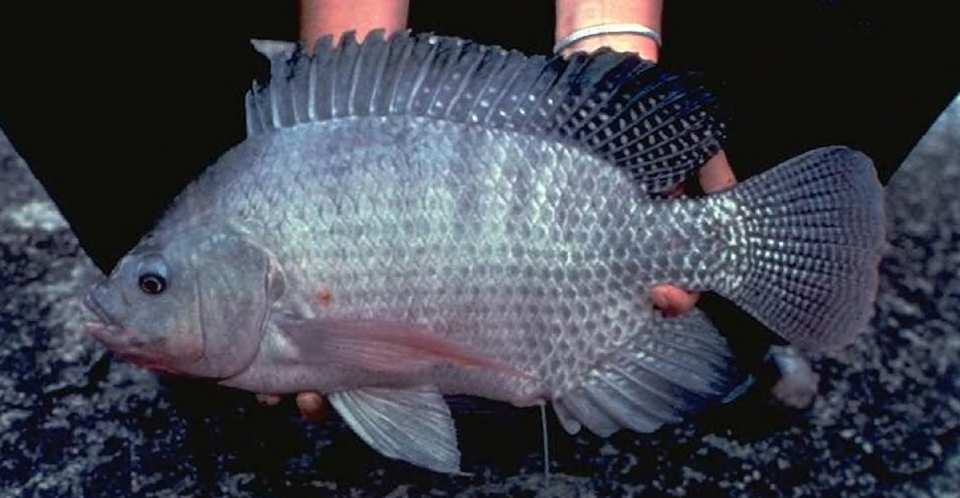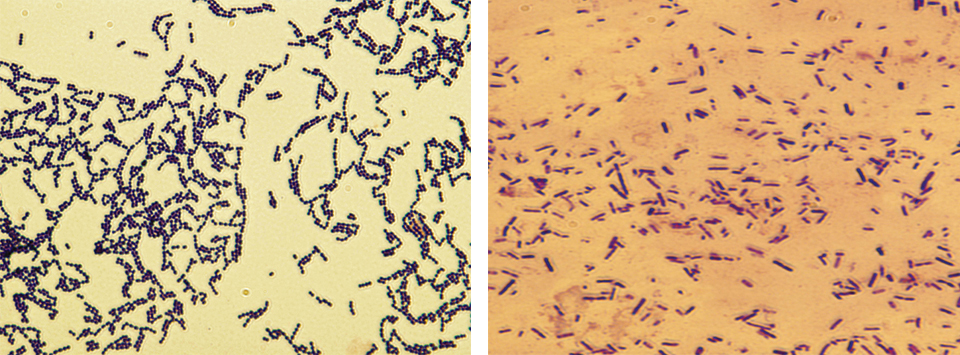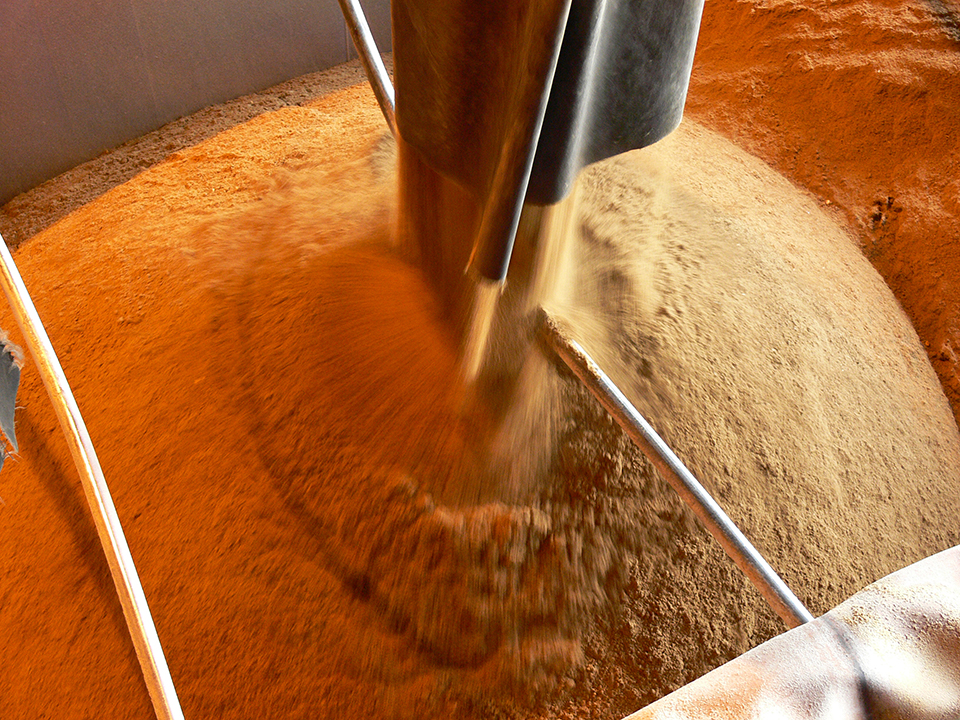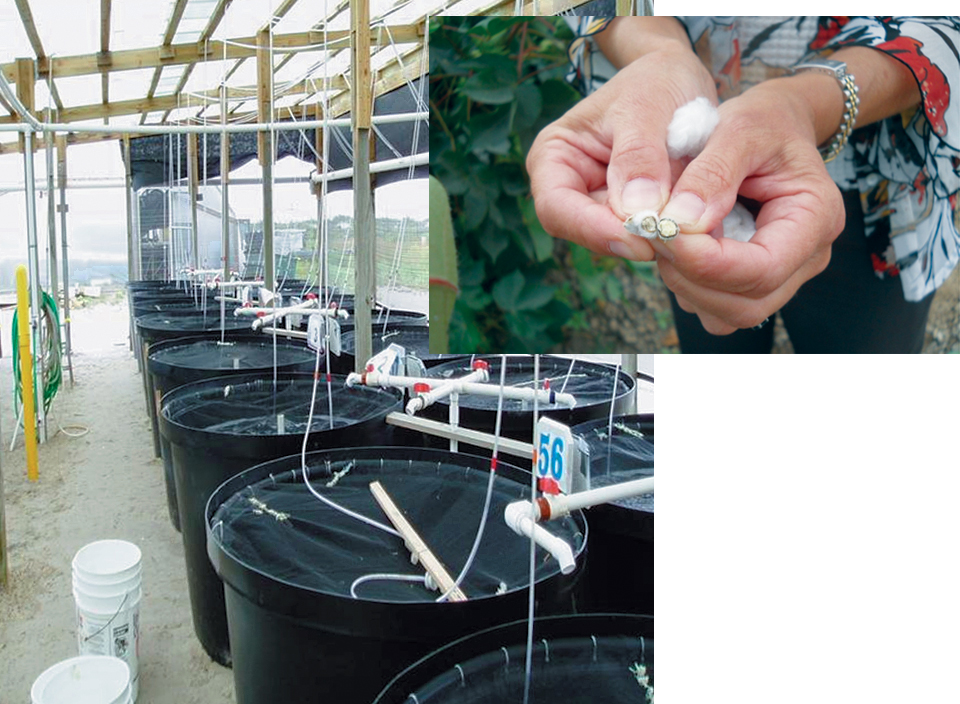Nile tilapia can tolerate relatively high levels

Gossypol is a toxic, naturally occurring pigment in cotton plants. The gossypol present in cotton seeds is all in a free form and, if present in large amounts in a diet, causes unfavorable physiological effects in monogastric animals including fish. It affects their erythrocyte levels, erythrocyte oxygen-carrying capacities, respiration rates, liver functions, feed intake and growth and reproduction efficiency.
Fish can tolerate higher levels of dietary gossypol than terrestrial animals. However, available information shows that the susceptibility of fish to dietary levels of gossypol varies between fish species. Gossypol has also been shown to exhibit antitumor, antiparasitic, and antibacterial activities.
Diet and study setup
The authors recently evaluated the effect of dietary levels of gossypol on the growth, hematology, immune response and resistance of Nile tilapia to Streptococcus iniae.
A purified basal diet containing 34 percent crude protein and 3,200 kcal digestible energy per kilogram was supplemented with 0, 50, 100, 200, 400, 800, or 1,600 mg of gossypol from gossypolacetic acid at the expense of celufil. Twice daily for 12 weeks, each diet was fed to apparent satiation to juvenile tilapia of 4.4 grams average weight stocked at 30 fish per aquarium in triplicate aquariums.
The aquariums were supplied with flow-through dechlorinated tap water maintained at 25 to 27 degrees-C. Water was continuously aerated. The photoperiod was maintained on a 12 hours light, 12 hours dark schedule.
Fish were sampled at two-week intervals for measurement of weight gain. At the end of week 12, blood samples from 4 fish per aquarium were collected for determination of hematology, serum protein, and lysozyme. Another batch of 15 fish per aquarium was challenged by intra-peritoneal injection with 108 CFU S. iniae per fish, with mortality recorded twice daily for 14 days. Blood samples from 4 fish per aquarium prior to and 15 days after challenge were collected for measurement of antibody titer.
Results
Fish fed the control diet exhibited the lowest (P < 0.05) weight gain. The value significantly increased at each incremental level of dietary gossypol up to 100 milligrams per kilograms (Table 1). No significant differences were observed among the weight gains of fish fed diets containing over 100 milligrams per kilograms gossypol and between fish fed 50- and 1,600-mg gossypol diets. Dry matter feed consumption and feed-efficiency ratios were a reflection of weight gain. Survival was not affected by dietary levels of gossypol.
Lim, Mean performance of Nile tilapia fed diets, Table 1
| Dietary Gossypol Level (mg/kg) | Weight Gain (g/fish) | Dry Matter Feed Consumption (g/fish) | Feed Efficiency Ratio | Survival (%) |
|---|---|---|---|---|
| 0 | 23.33c | 28.87d | 0.81c | 86.7a |
| 50 | 34.55b | 35.65c | 0.97b | 91.1a |
| 100 | 41.90a | 39.94abc | 1.05ab | 90.0a |
| 200 | 44.25a | 40.44abc | 1.09a | 97.8a |
| 400 | 45.77a | 43.74a | 1.05ab | 91.1a |
| 800 | 45.36a | 42.98ab | 1.05ab | 91.1a |
| 1,600 | 38.59ab | 37.86bc | 1.02ab | 88.9a |
| Pooled standard error mean | 2.17 | 1.75 | 0.03 | 4.0 |
Red blood cell counts significantly increased in fish fed the 800-mg gossypol diet, but did not differ among fish fed the other diets. White blood cell counts and hematocrit and hemoglobin levels were not affected by dietary levels of gossypol. The serum lysozyme activity of fish fed the 200-mg gossypol diet was significantly higher than those of fish fed the control and 50-mg gossypol diets, but did not differ from that of fish fed diets containing 100 milligrams per kilograms or higher gossypol.
Dietary gossypol levels had no effect on serum protein and antibody titer at day 15 post-challenge. Cumulative mortality 14 days post challenge with S. iniae was significantly lowest for fish fed the 100-mg gossypol diet. Highest mortality was obtained in fish fed the 800-mg gossypol diet, but this was not significantly different from that of fish fed 0-, 50-, 200- and 1,600-mg gossypol diets.
Conclusion
Compared to other fish, Nile tilapia can tolerate relatively high levels of dietary gossypol. Supplementation of gossypol up to 1,600 milligrams per kilograms diet had no effect on survival, white blood cell count, hemoglobin, hematocrit, serum protein, and antibody titer. A dietary gossypol level of 100 milligrams per kilograms was sufficient to improve growth, feed-efficiency ratio, lysozyme activity, and the resistance of fish to S. iniae infection.
(Editor’s Note: This article was originally published in the October 2003 print edition of the Global Aquaculture Advocate.)
Now that you've reached the end of the article ...
… please consider supporting GSA’s mission to advance responsible seafood practices through education, advocacy and third-party assurances. The Advocate aims to document the evolution of responsible seafood practices and share the expansive knowledge of our vast network of contributors.
By becoming a Global Seafood Alliance member, you’re ensuring that all of the pre-competitive work we do through member benefits, resources and events can continue. Individual membership costs just $50 a year.
Not a GSA member? Join us.
Authors
-
Chhorn Lim, Ph.D.
Aquatic Animal Health Research Laboratory
USDA-ARS, MSA
P.O. Box 952
Auburn, Alabama 36831-0952 USA[109,111,99,46,103,110,105,114,112,115,100,110,105,109,64,104,104,99,109,105,108]
-
Mediha Yildirim, Ph.D.
Aquatic Animal Health Research Laboratory
USDA-ARS, MSA
P.O. Box 952
Auburn, Alabama 36831-0952 USA -
Phillip Klesius, Ph.D.
Aquatic Animal Health Research Laboratory
USDA-ARS, MSA
P.O. Box 952
Auburn, Alabama 36831-0952 USA -
Peter J. Wan, Ph.D.
Southern Regional Research Center
USDA-ARS, MSA
New Orleans, Louisiana, USA
Related Posts

Health & Welfare
Developing live bacterial vaccines by selecting resistance to antibacterials
As wide use of antibiotics has led to antibiotic resistance in fish pathogens, vaccines present an alternative control method to prevent bacterial diseases.

Aquafeeds
Gamma irradiation enhances nutritional value of animal byproducts
Gamma irradiation treatment presents a possible processing technique for reducing anti-nutrients and improving the nutritive quality of many feed ingredients.

Aquafeeds
Glandless cottonseed meal replaces fishmeal in shrimp diet research
Cottonseed meal is high in protein and less expensive than fishmeal and soybean meal. Cotton plants can be engineered without gossypol in their seeds.

Health & Welfare
Dietary gossypol benefits limited in improving ESC resistance in catfish
The amount of cottonseed meal that can be included in fish diets depends mainly on its levels of free gossypol and available lysine.


